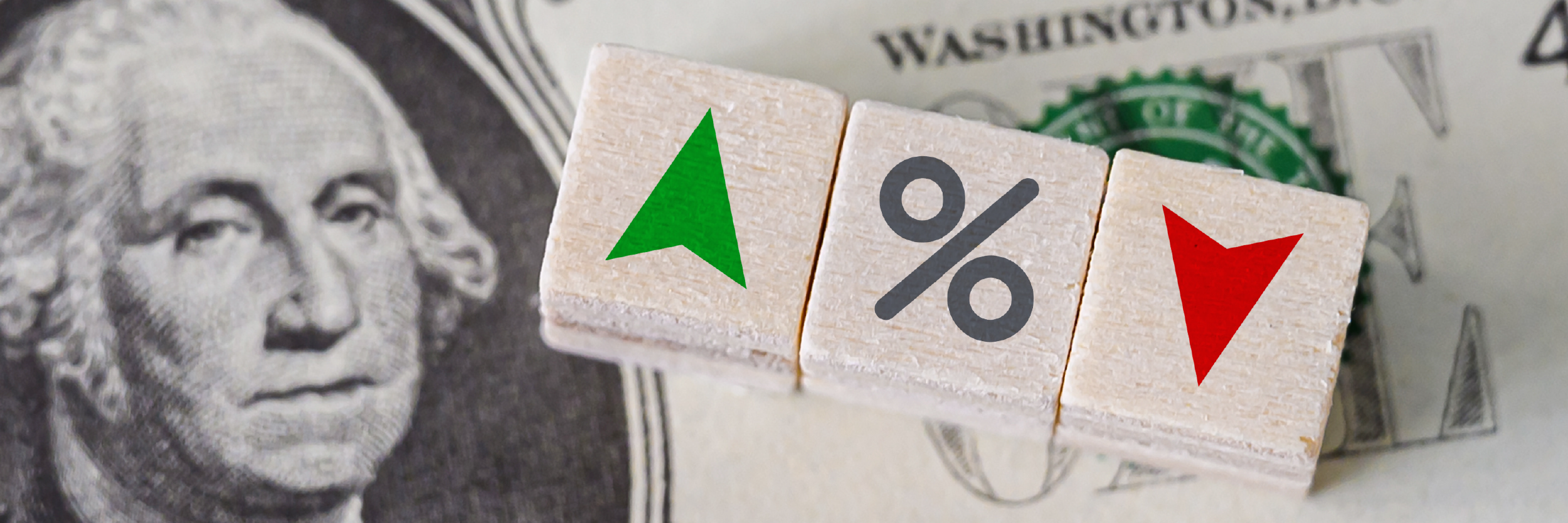The Fed's Dilemma

For anyone who follows economic or political news, the Federal Reserve and Fed Chair Jerome Powell have been in the headlines a lot more than any time in recent memory. After cutting rates by 100 basis points in 2024, the Federal Reserve has kept rates steady so far this year. There have been outspoken critics, including President Trump, to the Federal Open Market Committee (FOMC)’s inaction on lowering rates thus far in 2025. We are going to take a deeper dive and explore what the Fed will be considering at its upcoming meetings.
The Role of the Federal Reserve
The Federal Reserve exists for two primary reasons: to control inflation and to maximize employment. This is often referred to as the dual mandate. These two objectives guide the Fed’s monetary policy, but striking the right balance between the two objectives can be tricky. This is the dilemma the Fed currently finds themselves in and has been the reason for debate amongst economists and even the Fed Governors themselves.
How We Got Here
Coming out of the pandemic in 2021, inflation peaked at just over 9 percent. The Fed began aggressively raising rates in the middle of 2022 to combat the rising cost of goods and services. The Fed continued raising rates until July 2023, when the Fed funds rate topped out at 5.25-5.50 percent. In an effort to reach their inflation goal of 2.0 percent, the Fed kept rates unchanged until September 2024, when they cut by 50 basis points. The Fed cut an additional 50 basis points for the remainder of 2024 and left rates unchanged at 4.25-4.50 percent so far in 2025.
Political Pressure
President Trump nominated Jerome Powell to serve a four-year term as chair of the Federal Reserve in November 2017. He was confirmed by the Senate in January 2018 and took office in February 2018. President Biden reappointed Powell for a second term in 2022 that will last until May 2026.
Since taking office for the second time, President Trump has been an outspoken critic of Chair Powell. President Trump feels that Powell’s Fed has been too slow to lower interest rates, therefore putting the U.S. economy at risk. Here one of many direct quotes from President Trump:
"Jerome 'Too Late' Powell is hurting the Housing Industry, very badly. People can't get a Mortgage because of him." (Truth Social, August 2025)
Why Lower Interest Rates?
In short, President Trump wants lower rates to help him achieve his economic and political goals. Lower interest rates will generally stimulate the economy. Economic growth and stock market gains are something President Trump uses to measure his economic success. Lower interest rates will allow businesses to increase spending and investment, which can lead directly to an increase in employment. Lower interest rates not only make borrowing cheaper for businesses and consumers, but they also lower the cost of interest payments the U.S. government must pay on its debt servicing, which allows more of the budget to be spent on projects that boost the economy.

Risks of Lowering Rates Too Much or Too Soon
Inflation, plain and simple. The Fed has told us that their target inflation is 2.0 percent. It looked like we were on a path to reach that goal when the Fed began cutting rates in 2024. Things changed when President Trump announced his tariff plans in early 2025. Inflation expectations started taking control of the conversation, and the Fed took a wait-and-see approach to the effects the tariffs would have on inflation. Tariffs did not have quite the immediate impact some economists predicted, with companies absorbing most of the initial price hikes caused by the import fees. However, recent data has started to show a potential shift, as prices have once again started to trend upwards.
Lower rates would certainly provide a boost to employment and the economy in general, but the Fed is concerned that the consumer will be unable to handle another bout of inflation like the one we experienced in 2021-2022. Even though current inflation is below 3.0 percent, we still have elevated prices compared to pre-pandemic times. The cheapest seats to see Super Bowl champions, the Philadelphia Eagles, in their home opener against the Cowboys are currently over $600. Many of us know that it now costs over $50 to take a family of four to McDonalds, and I’m not sure if the middle class can handle more upward price pressures.
Risks of Waiting to Lower Rates or Lowering Too Little
Keeping rates too high for too long can certainly have a negative effect on employment. The July jobs report showed job growth of 73,000, well below what economists predicted. It also revised the May and June numbers lower by more than 200,000 jobs, resulting in an average monthly gain of just 35,000 from May through July, marking the weakest non-pandemic stretch since 2010.
Unemployment also ticked up to 4.2 percent from 4.1 percent the previous month. This data showed that U.S. job growth has slowed sharply and resulted in calls for the Federal Reserve to begin cutting rates immediately to avoid further decrease in employment. Even Chair Powell himself has recently acknowledged emerging risks in the labor market and said that rate cuts may be necessary to prevent further decay.
The fear of keeping rates too high for too long is that it could eventually lead to a recession. Weakened employment, along with higher borrowing costs and less business investment, can cause the economy to contract. This is the scenario that both the Fed and President Trump want to avoid and is a big reason why we may see a September rate cut.
What Will the Fed Do Next?
Well, that remains to be seen. According to Bloomberg on August 25, there is an 83 percent chance that the Fed will cut rates by 25 basis points. They are predicting 50 basis points in rate cuts by year end. What the FOMC eventually decides is going to depend on inflation and employment data between now and the September 17 meeting. They will certainly focus on PCE inflation data that was released on August 29, as well as the August jobs report to be released on September 5.
It wouldn’t surprise many economists to see a slight uptick in both inflation and unemployment, putting the Fed in an interesting dilemma. Unemployment remains historically low, even though the rate in July ticked up to 4.2 percent from 4.1 percent, but increased fears that keeping rates at current levels for much longer will cause further deterioration in employment. An early survey of economists at Bloomberg shows that unemployment is predicted to tick up once again to 4.3 percent in August. On the other side of the argument, Core PCE inflation is also predicted to creep up on a year-over-year basis to 2.9 percent from 2.8 percent.
Part of the problem in predicting what the Fed will do next and how much they will cut rates going forward is the fact that they don’t specifically define maximum employment. We know that the inflation target is 2.0 percent, but we don’t know what unemployment rate they are comfortable with. A 5.0 percent unemployment rate used to be considered full employment in the U.S., but more recently, 4.5 percent is the number a lot of economists will refer to. Is the Fed ok if unemployment creeps up to 4.5 percent? If so, then you may see them continue to take a slower path to cutting rates as they wait and see if they can get closer to their inflation goal of 2.0 percent.
Time will tell what happens next. But with the FOMC set to meet next week, we won’t have to wait too long to find out.
Roger Heidlebaugh serves as Vizo Financial’s portfolio strategist. He acts as an investment consultant for credit unions, helping them to manage their fixed income investments, jumbo CDs and deposit accounts. On the corporate side, he analyzes, monitors and facilitates liquidity funding and investment solutions for Vizo Financial. Mr. Heidlebaugh is well-versed in the financial services industry, with over 14 years of experience as a financial advisor and expertise in managed accounts, various annuities, life insurance, investments and more.

